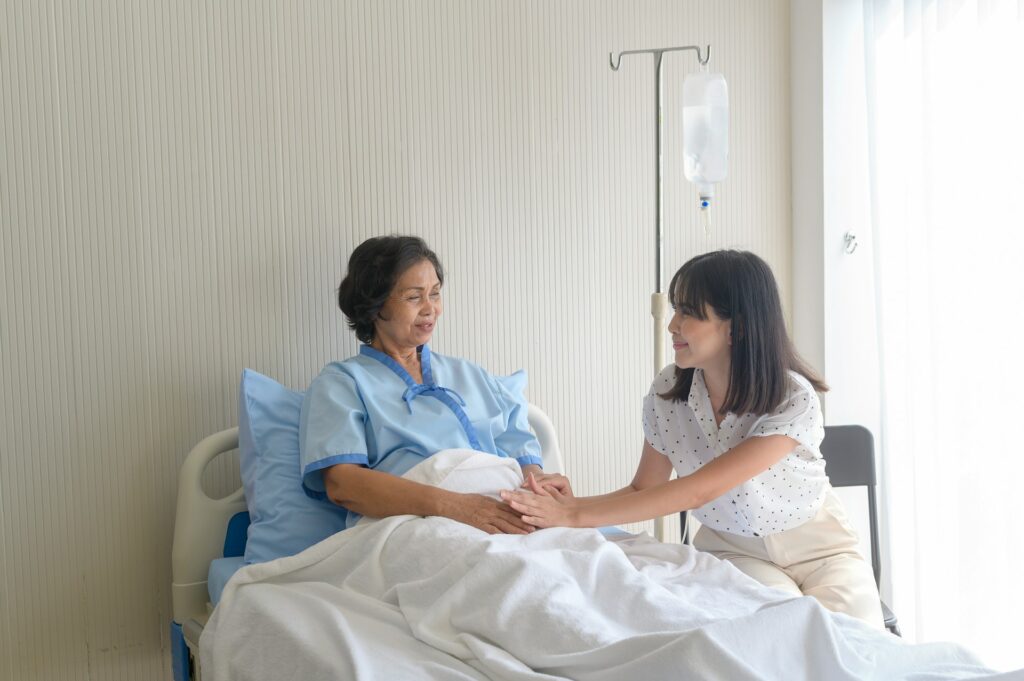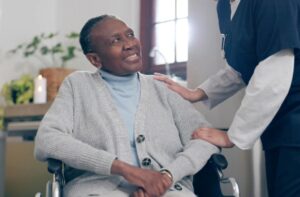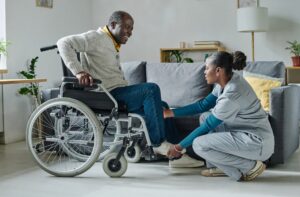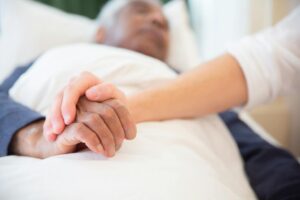As the weather shifts and the days grow shorter, late fall brings changes that can quietly impact how people feel, especially those receiving hospice care at home. Colder air, fading daylight, and a slower pace outside can make everyday challenges feel even heavier. For those in the final stages of illness, the season often brings added discomfort, both physically and emotionally.
During this time of year, having the right kind of medical care and symptom management at home becomes more important. It helps keep people more comfortable and eases some of the pressure that loved ones may be feeling. Even small adjustments can make a big difference when days are harder and routines shift indoors.
How Weather and Daylight Changes Affect the Body
Fall does not just sneak in with a chill. It settles into people’s bodies. Joints may feel stiffer in colder weather, sore muscles can ache more, and for some, it becomes harder to breathe comfortably. As the air outside gets colder, staying warm takes more effort, especially for people whose energy is already low.
Less sunlight can affect mood, too. Many people feel more tired or down by late afternoon, even if they rested. Emotional dips matched with physical symptoms make something as simple as sitting up or eating lunch feel harder than usual. These changes are real.
That is why it matters when care teams notice the shifts. From VNA of Ohio’s site, hospice nurses visit regularly, assess comfort, and make changes quickly, which is especially helpful as seasons change. Whether it is checking in more often or making the home brighter and warmer during shorter days, paying attention to these seasonal effects keeps the person more comfortable. Thoughtful care that matches the pace and mood of fall helps ease stress without big changes.
Easing Common Late Fall Symptoms at Home
Late fall can make symptoms like pain, fatigue, and breathlessness feel sharper. For some, breathing is a bigger effort. Eating turns into a challenge. Pain, especially in the evenings, can settle in and make it tough to get comfortable.
Hospice teams help ease these symptoms through small actions with big meaning. A heating pad or soft blanket brings not just warmth, but comfort. When breathing is difficult, keeping the room air a bit warmer or using a humidifier can help settle things. When it is hard to eat, a warm bowl of soup or a favorite soft food might be all someone can handle, and that is okay.
Families do not have to guess how to help. With trained hospice nurses and aides in the home, symptom management is not left up to chance. Support is shaped around what the person needs, and timing can change based on the day’s rhythm. This relief gives family more space to be present together, which means more comfort with less worry.
Some specific ways hospice supports at home during late fall include:
– Providing in-home medication management, so pain stays controlled even when symptoms change
– Adjusting comfort aids like blankets, heating pads, or special pillows for warmth and relief
– Coordinating the delivery of needed supplies directly to the home
– Helping patients change positions if joints are stiff or sore
Emotional and Mental Support When Days Feel Heavier
The season can affect more than just the body. As the days get shorter, time indoors increases, and emotions may run deeper. Nights begin earlier, mornings feel darker, and the air often carries a quietness that can feel isolating. Patients may withdraw or feel anxious, sometimes without any clear reason.
This is where steady, personal support can make all the difference. Hospice care includes time to talk and listen, without feeling rushed or checked off a list. Patients can share fears about the future, reflect on memories, or simply enjoy a silent companion for a little while. That steady presence can bring real calm.
Families feel the season’s weight too. Worry and tiredness can build up fast when someone you love is growing sicker. Hospice supports families by offering emotional guidance and simple reminders that taking breaks is okay. Sometimes talking to a social worker, or just having someone to listen for a few minutes, makes the tough moments more manageable.
Staying Safe Indoors as Health Needs Grow
With colder weather, most people spend more time indoors. Safety becomes an even higher focus. Wet floors, dim lighting, or simple changes in schedule can lead to slips, missed medication, or restless sleep. These risks grow as health needs deepen.
Hospice care is designed to help families spot and reduce these risks. Care plans from VNA of Ohio are updated often and include safety checks for fall risks, cluttered spaces, and changing health habits. Hospice aides and nurses remind patients about medication times and help them move safely from bed to chair or bathroom. Being hands-on and present in the home means small hazards are noticed and dealt with early, not after a problem.
This approach supports dignity too. People are included in decisions, even when illness takes away their usual independence. Choosing when to rest or what to listen to during visits may seem simple, but it can mean a lot.
Peace of Mind When It Matters Most
Seasonal changes bring extra challenges for anyone whose health is already fragile. Bodies ache, moods shift, and routines move inside. It is a tougher season in many ways.
Thoughtful medical care and symptom management can make late fall a little gentler. When support comes right to the home—medications managed, comforts delivered, and someone always ready to listen—worry feels lighter. With steady help in place, this season does not have to add more stress. Even as days grow shorter and nights get colder, hospice care can keep comfort and peace within reach.
At VNA of Ohio, we understand how the season can affect not just the body, but the way life feels day to day. Whether it’s managing discomfort, keeping routines steady, or creating a calmer space at home, the right kind of support helps ease the strain. Our focus is on comfort and clarity, especially when health changes bring more questions than answers. When you need steady help with medical care and symptom management, we’re here to talk. Reach out to us today.







